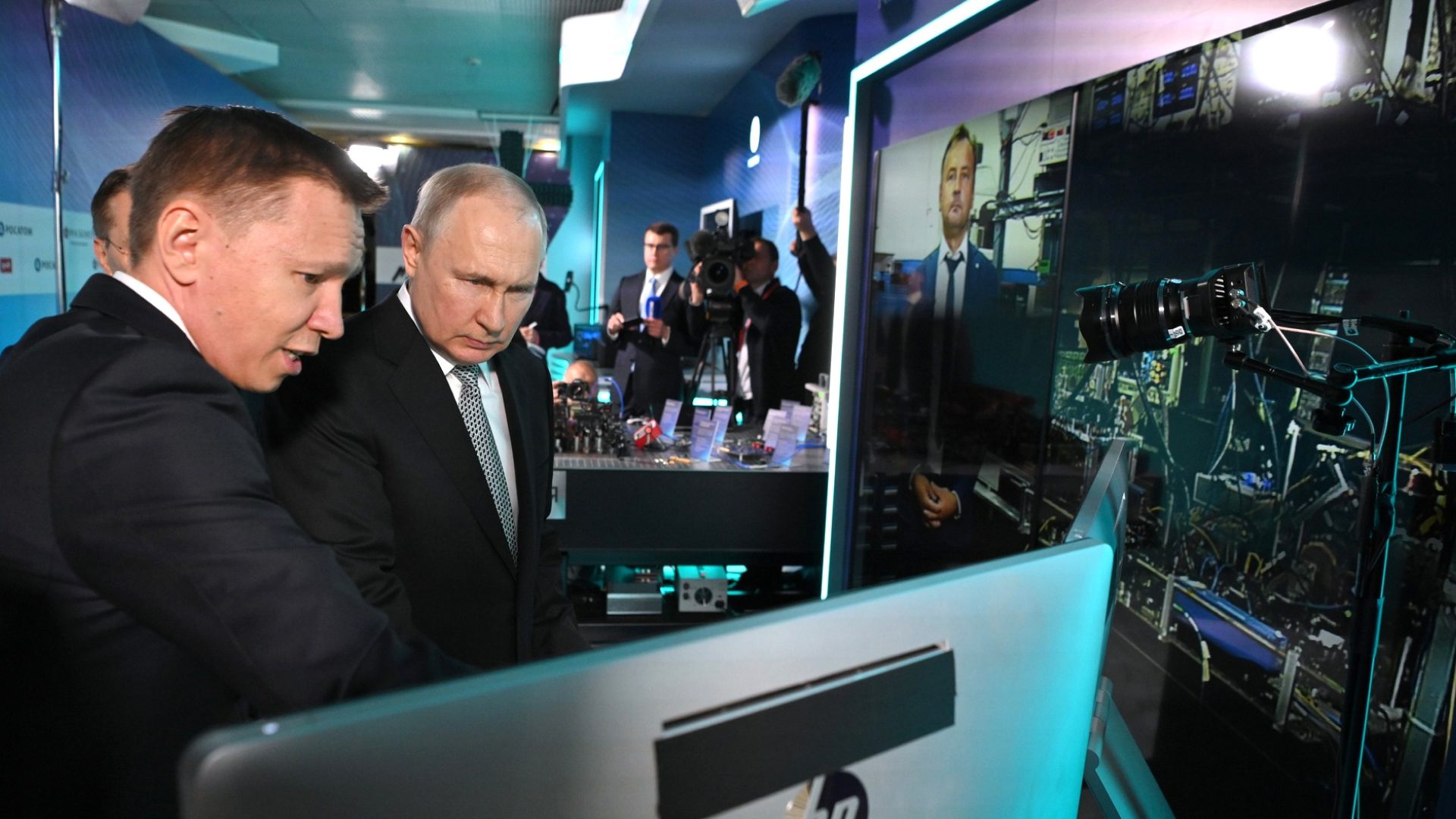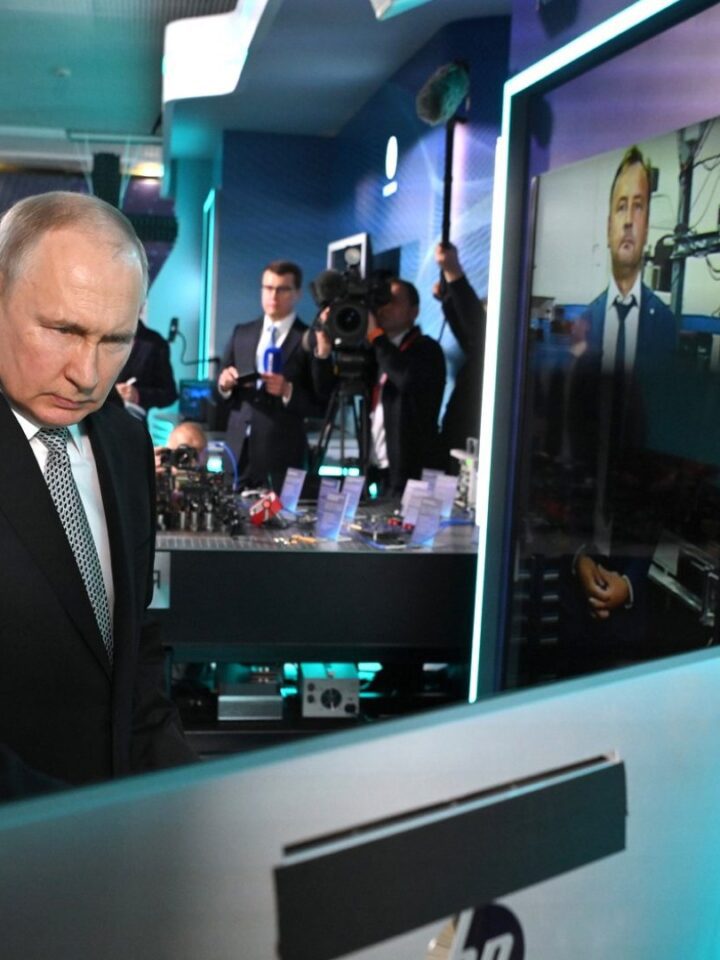Russia’s inability to achieve technological breakthroughs in different areas has become a central challenge to its development strategy. Despite ambitious goals and substantial budget allocations, national projects in key sectors are exhibiting systemic failures. The recent meeting of the Presidential Council for Strategic Development and National Projects, along with parallel attempts to provide ideological legitimacy for the turn towards isolationism, underscores a broader reality: with limited access to foreign technologies and entrenched institutional stagnation at home, Russia is approaching the limits of sovereign growth.
The Strategic Development Council as a symptom of systemic crisis
Last week, President Vladimir Putin convened a meeting of the Council for Strategic Development at his Novo-Ogaryovo residence, gathering senior government officials in charge of social and economic policy. Officially, the meeting was meant to review the interim results of the implementation of national projects1. In practice, it reflected the Kremlin’s growing concern about the pace and outcomes of strategic initiatives.
Putin’s address at the meeting signalled the need to fundamentally revise the government’s approach to national projects. He directed his sharpest criticism at initiatives tied to technological sovereignty, particularly in aviation, robotics, and transport. He singled out the development of unmanned systems, both civilian and military. While Putin acknowledged some progress, he also emphasised Russia’s vulnerability to foreign drone threats and the urgent need to accelerate both platform development and countermeasures.
Putin’s speech served a dual purpose: on the one hand, it was an expression of the state’s concern for citizens that highlighted some successful outcomes of the national projects. On the other hand, it criticised the government for cutting budgets, and was a tacit admission that the most ambitious projects vital for addressing Russia’s isolation are faltering.
Nikolai Petrov
Head of Analysis of Transformational Processes, NEST Centre
The Council meeting marked a departure from routine performance reporting toward a more critical evaluation of systemic failures – both in target-setting and implementation. Putin pointed to poor planning and called for greater personal accountability and more ‘engaged management’. However, the root of the problem lies deeper: the centralised system is simply unable to adapt to new conditions. Attempts to compensate for inefficiency through tighter control and increased funding are running up against the limits of extensive growth, in which increased spending fails to produce commensurate results.
Limits of implementation: setbacks in civil aviation and industrial automation
Despite Putin’s declared ambition to achieve technological sovereignty, national projects in key strategic sectors are stagnating rather than advancing. The most troubling signals come from civil aviation and industrial robotics – sectors critical to Russia’s ability to secure industrial self-sufficiency.
Air mobility is a stated policy priority: the government aims to reach 1.08 annual passenger trips per capita by 2030. However, current projections fall short. Russia’s Federal Air Transport Agency expects a 1.7 per cent decline in air travel volumes in 2025 compared to 2024. The aircraft fleet remains virtually unchanged, placing additional strain on ageing equipment and forcing airlines to resort to ‘wet leasing’2 and cannibalisation of parts. With Airbus and Boeing aircraft no longer easily serviceable because of western sanctions, the aviation industry still relies on outdated Antonov models (An-24 and An-26), with plans to keep them in service for up to 60 years. Domestic production is not meeting demand: the MS-21 programme faces repeated delays; the SSJ-NEW depends on the certification of new engines; and timelines for the Il-114, Tu-214 and Baikal aircraft have slipped. The Ministry of Industry and Trade has already scaled back its engine production targets, pushing back project deadlines even further.
Robotics in industry is also a national priority: by 2030, Russia aims to be in the global top 25 countries for robot density (145 units per 10,000 workers). Achieving this target will require annual growth of the robot fleet by 38 per cent – a rate exceeding China’s. Yet federal funding for the initiative has already been cut by 1.7 billion roubles (USD 21.3 million) in 2025, and requirements for localisation have been relaxed. The sector suffers from a shortage of system integrators, a weak research base, a lack of large-scale R&D, and severely limited production capacity – only two manufacturers can assemble more than 200 robots per year. Unless the sector undergoes restructuring and generates stable demand, the project is likely to remain a statistical exercise devoid of long-term technological significance.
Technological dead end: the limits of sovereign development
The situation in civil aviation and industrial robotics is not an exception, but rather a reflection of broader systemic trends. The strategy of technological sovereignty, built on the logic of forced mobilisation and import substitution, is running up against clear constraints. Against a background of sanctions, broken scientific and industrial supply chains, tight timelines, and limited resources, achieving a technological breakthrough – at the scale and speed envisioned by the Kremlin – is virtually impossible. National projects are reaching their structural limits: within the current model, where growth is driven primarily by budgetary injections and redistribution, and where no changes are made to governance or incentive mechanisms, they are losing effectiveness.
This gap between ambition and capability is reminiscent of the late Soviet era, when the consequences of isolation were partly mitigated by demographic advantages and the existence of Comecon, which provided markets, resources, and limited technological cooperation. Today, Russia lacks both internal reserves and external support. Technological autarky, which proved infeasible even in the industrial era, is all the more unattainable in today’s globalised economy, where production efficiency continues to rely on deep international specialisation.
As a result, Russia’s strategy finds itself trapped between two scenarios: ideologically unacceptable engagement with the West and strategically risky dependence on China. As long as the Russian response is limited to isolationist and utopian narratives unsupported by real technological capacity, the country will remain in a strategic impasse.
Endnotes
- National projects in contemporary Russia are large-scale state programmes launched by the president and government to achieve strategic socio-economic objectives. Their primary aim is to stimulate development across key sectors such as healthcare, education, demographics, infrastructure, the environment, the digital economy, and others. The first set of national projects was implemented between 2019 and 2024, while a new cycle – running until 2030 – began at the end of 2024. It is intended to deliver what the authorities call a ‘new phase of economic growth’ under sustained sanctions and technological isolation. Nine projects are devoted to the goal of achieving ‘technological leadership’ and ensuring that Russia has a technological and production base of its own ↩︎
- Leasing aircraft together with crew, maintenance, and insurance from another operator ↩︎




